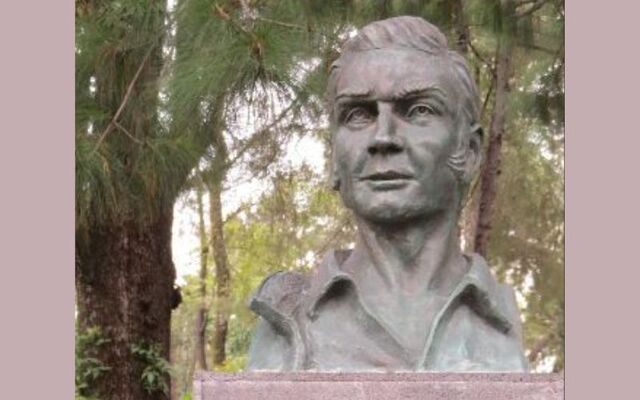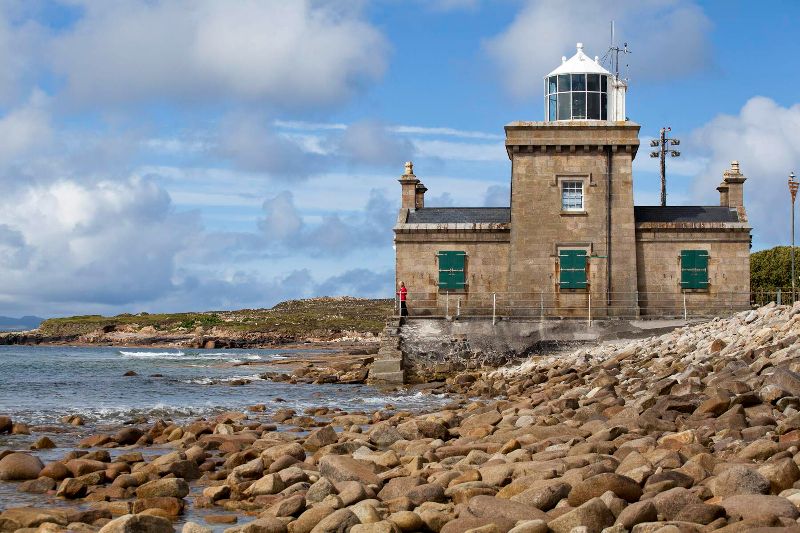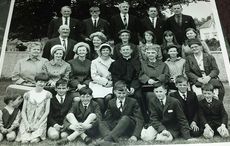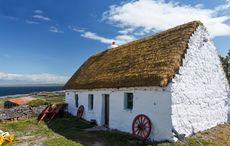When we think of Mexico, few would make an automatic association with Ireland. Yet when we examine the historical record we find a strong bond has existed between the two former colonies going back to at least 1640.
Each year since 2016 a vibrant Saint Patrick’s Day parade has taken place in Mexico City. How did this unlikely event come about?
Since an audacious revolt against English rule led by "Silken Thomas" Fitzgerald, 10th Earl of Kildare, in 1534, occasioned the first exodus of Irish people from their homeland—in the form of thousands of soldiers enlisting en masse in the ranks of continental European armies—the Irish have spread throughout the world.
This process of forced displacement accelerated dramatically in the 1840s, when famine, coupled with British government incompetence and intransigence, a tacit genocide, drove two million Irish to cross the dark Atlantic aboard “coffin ships”—that or die huddled in the corner of a roofless cottage, in ditches, or on the side of a lonely road.
John Riley and Saint Patrick’s Battalion
Among them was John Riley, a Clifden-born former British soldier who enlisted in the American Army. Shocked by the ferocious xenophobia and sectarianism he and his compatriots encountered from Nativist soldiers and officers, just prior to the outbreak of the Mexican-American War (1846-1848) Riley “went over the hill.”
On 12 April 1846, after receiving a pass to attend mass outside General Taylor’s military camp, Riley swam across the Río Bravo (Rio Grande to Americans) and was brought before Mexican General Pedro de Ampudia. Upon discovering that Riley was a skilled artillerist the wily de Ampudia quickly made him a first lieutenant in the Mexican Army.
Riley formed a unit of foreign, largely Irish and Catholic, deserters, which became known as the Batallón de San Patricio (Saint Patrick’s Battalion)—also known as los san patricios or los colorados (for their red hair and ruddy complexion). Beneath a green silk flag bearing an image of Saint Patrick, the Mexican Eagle, and "Erin go bragh" they fought alongside their Mexican co-religionists in all the major battles of the conflict.
Read more
The addition of this crack unit to the Mexican side was crucial. The range of Mexican cannons was 400 meters less than that of American ones, and Mexican cannoneers lacked experience and were poorly trained. Riley and his veteran gunners evened up the odds by standardizing training and drilling until the Mexican gun crews were on a par with their American counterparts. At least two major artillery battles were fought to a draw and several Irishmen were awarded for valor, with many receiving field promotions.
Thirty-five San Patricios were killed in combat, 85 were taken prisoner, and on 10-13 September 1847, 49 members of the battalion were “launched into eternity” on the orders of General Winfield Scott. It is still considered the biggest mass hanging event in North American history. In La Plaza San Jacinto, where the hangings, whippings and branding took place, there is a bust of John Riley in front of a large plaque commemorating the Battalion. Every year Amhrán an bhFiann is played by the San Patricio Battalion Pipe Band, while on the same day the Mexican flag crackles in the sea breeze above the streets of Clifden.
Less a celebration of the saint himself, therefore, Saint Patrick’s Day in Mexico is a solemn commemoration of a group of Irish soldiers who, fleeing tyranny in their homeland, martyred themselves to rid their adopted country of a colonial apparatus so similar to the one they escaped they must have carried with them a constant sense of déjà-vu.
Traditionally viewed as turncoats by American historians, this jaundiced and simplistic viewpoint is changing, thanks in large part to the work of Dr. Michael Hogan, an Irish-American historian whose bestselling "The Irish Soldiers of Mexico" provides the most objective and sober analysis of the San Patricios phenomenon to date.

Love Irish history? Share your favorite stories with other history buffs in the IrishCentral History Facebook group.
An equally good book on the subject is Peter F. Stevens’s The Rogue’s March: John Riley and the St. Patrick’s Battalion, 1846-1848, which presents a coherent account of the role of this battalion in the conflict while also providing some historical context: emaciated corpses, their mouths smeared with grass, lining the roads and bothríns (side roads) of Western Ireland.
The Irish story in Mexico did not begin with the San Patricios, however. Several of the key figures, soldiers and bureaucrats who represented Spain in Nueva España in the 17th and 18th centuries were Irish or of Irish descent.
Hugh O'Connor
Among the most notable of them was Hugh O'Connor. Born in Dublin in 1732, O’Connor (Don Hugo O’Conór) was a descendent of Toirdhealbhach Mór Ua Conchobhair, King of Connaught and twelfth High King of Ireland.
Like other Wild Geese chafing under the punitive yoke of the penal laws, in 1750 O’Connor sailed for Spain, and joined the regiment of Aragón Volunteers, where two of his cousins, Alexander (Alejandro) and Dominic O’Reilly, were already serving as officers in the Spanish Royal Army.
He was first deployed to Cuba, then Mexico City, where he distinguished himself as a military tactician. He quickly rose through the ranks, becoming commander (comandante) of his own regiment before being appointed governor of Texas.
He also founded the settlement that became Tucson, Arizona, and was declared governor of the Yucatan Peninsula in 1776. After an illness occasioned by wounds received during many battles, on March 8th, 1779, he died at Quinta de Miraflores, Mérida, Yucatán.
William Lamport
But perhaps the best-known of these mysterious Irish figures in Mexico is William Lamport (Don Guillén de Lampart). The inspiration for the literary and cinematic character Zorro, Wexford-born Lamport emigrated to New Spain in 1640, where he witnessed firsthand the sadistic brutality of the Spanish colonial system.
El Zorro was the author of the first proclamation of independence in the New World and was later imprisoned for conspiring to free Nueva España by fomenting an uprising among Mexico’s Indigenous peoples, persecuted Jews, and African slaves.
If you ever go to Mexico City, just inside El Monumento a la Independencia or Columna de la Independencia (colloquially known as El Ángel de la Independencia), there is a marble likeness of Lamport. His arms are bound behind him, and his eyes, which reflect an expression of forlorn ecstasy, are lifted towards heaven.
He is the bodyguard to El Ángel—the only foreigner represented in what is also a mausoleum crypt containing the remains of fourteen heroes of the Mexican War of Independence against Spain, including Fr. Miguel Hidalgo, the Father of the Nation.
His last act was to hang himself with the rope binding him to the stake before his corrupt inquisitors could set him ablaze. Thus ended the remarkable life of William Lamport, Irish poet, thinker, revolutionary, and would-be King of Mexico.
This article was submitted to the IrishCentral contributors network by a member of the global Irish community. To become an IrishCentral contributor click here.




Comments